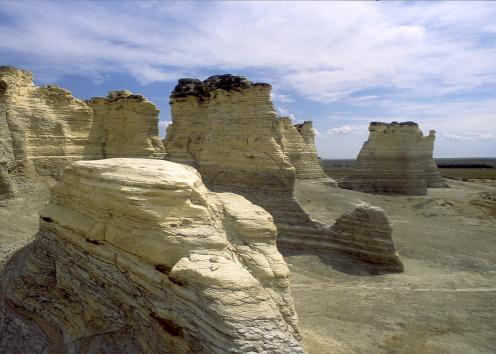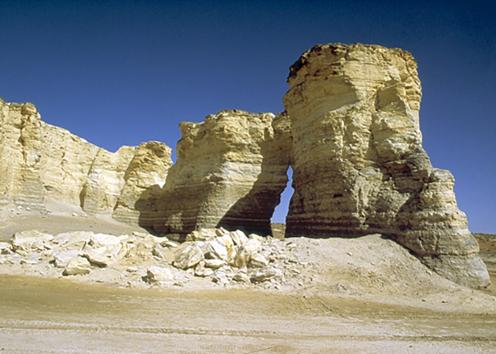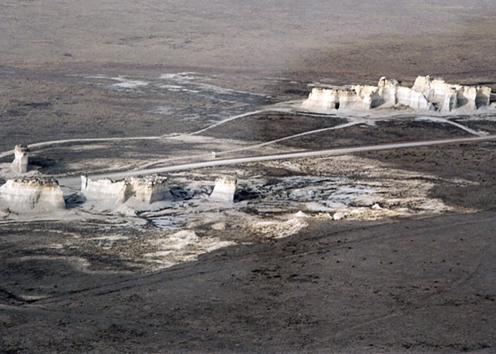Monument Rocks

In a region not known for excess moisture, the chunky pillars at Monument Rocks National Landmark in Gove County are reminders of a time when water was abundant. The towering rocks are composed mainly of chalk formed from an enormous amount of oozy sediment that settled on the floor of a Cretaceous inland sea about 80 million years ago.
Deposited at a rate of about 0.036 mm, or 0.0014 inches, per year, the sediment accumulated to a height of several hundred feet over millions of years. In subsequent periods, it was buried under younger layers of sediment and compressed into rock, which was eventually exposed at the surface by erosion. Through further erosion, the thick chalk beds started to thin. The remnants at Monument Rocks, however, were spared when more resistant beds on top that had been cemented, likely by a dissolved mineral "glue," helped shield the softer layers below.
Monument Rocks are composed of the Smoky Hill Chalk Member of the Niobrara Chalk. Despite its name, the Niobrara Chalk is a geologic formation made up mainly but not entirely of chalk, and the layers at Monument Rocks include chalky limestone and chalky shale.
The chalk beds first became famous in the 19th century for fossils of giant swimming reptiles called mosasaurs and plesiosaurs, gliding pterosaurs, aquatic birds with teeth, 20-foot-long fish, clams up to six feet in diameter, and many types of smaller marine animals. Fossils are not as common at Monument Rocks as they are in the less-visited badlands and outcrops along the Smoky Hill, Saline, and Solomon rivers and their tributaries.
Although Monument Rocks National Landmark is on private property, the landowners do allow visitors.



